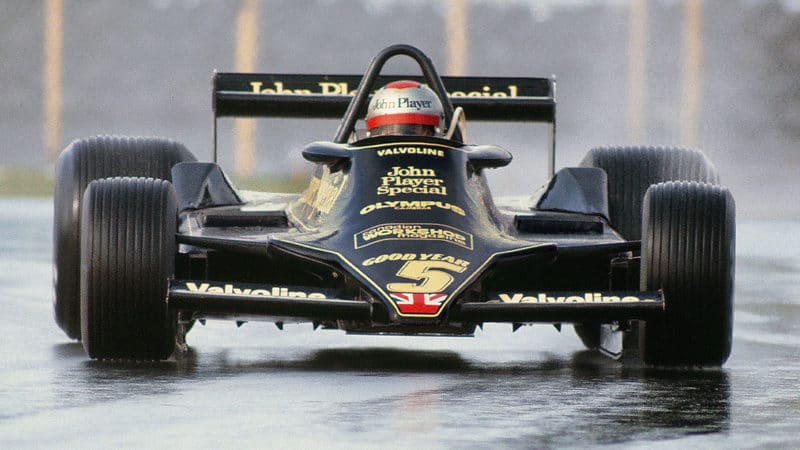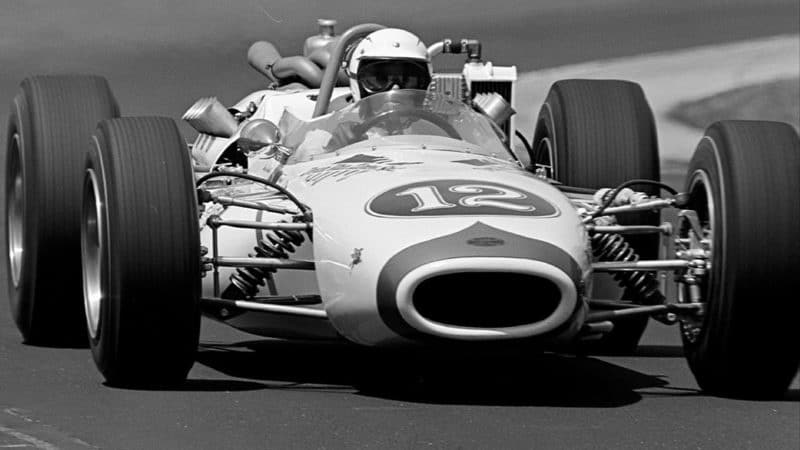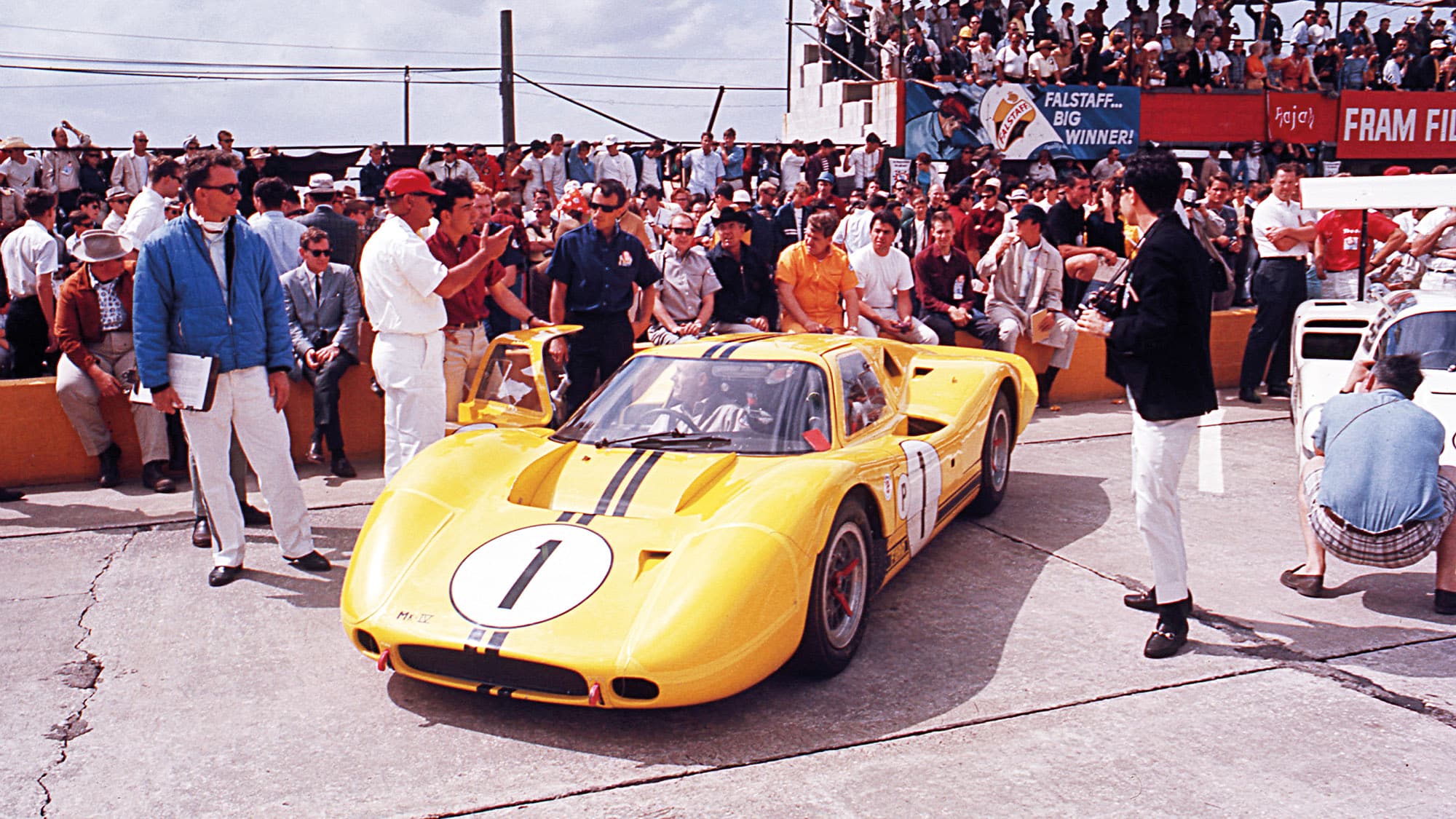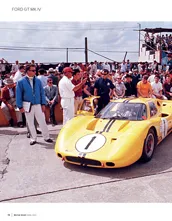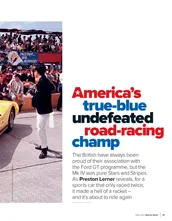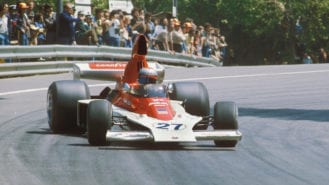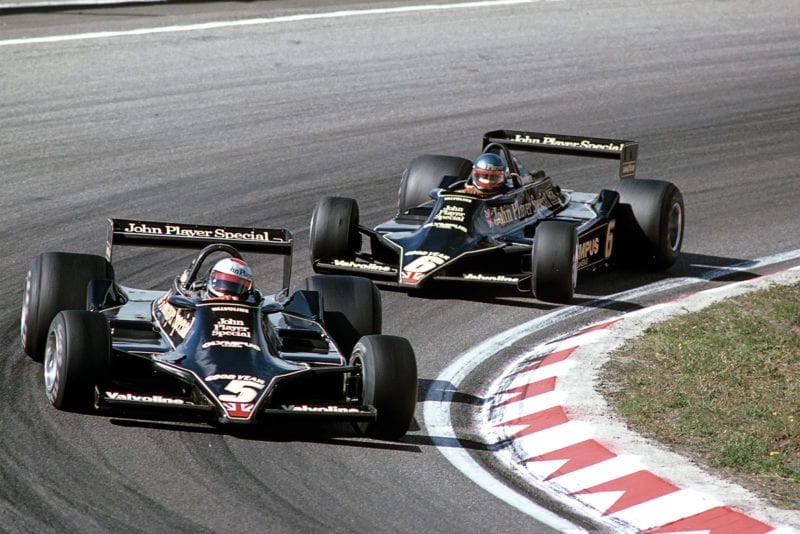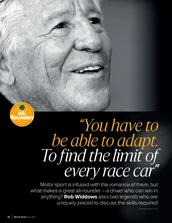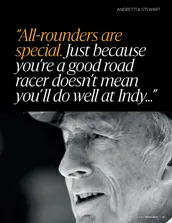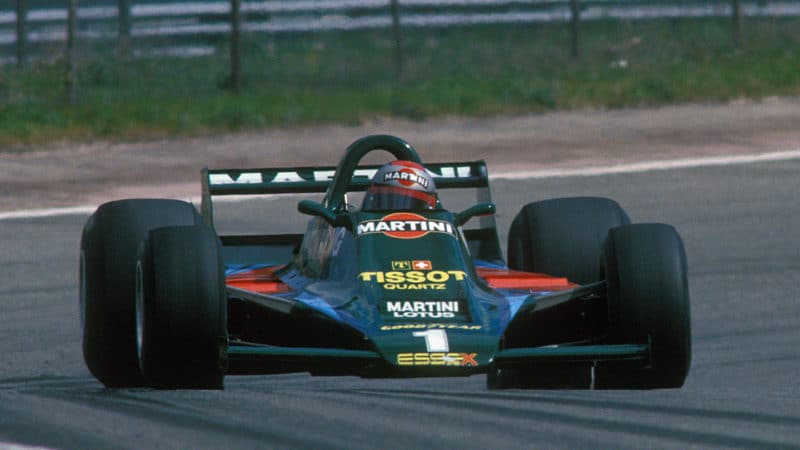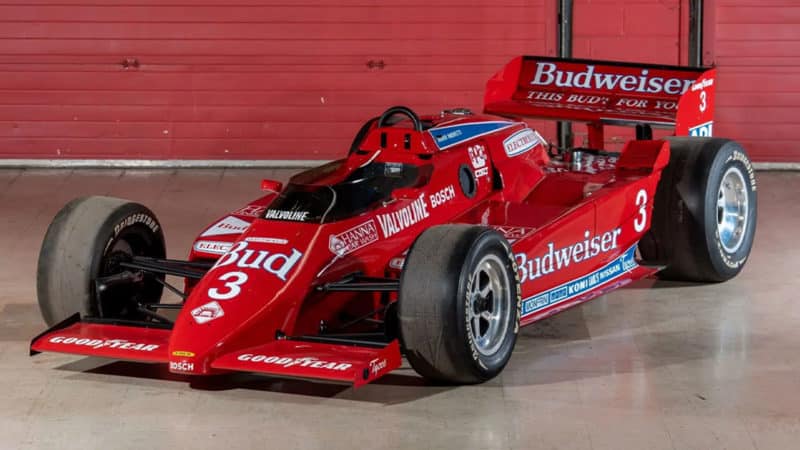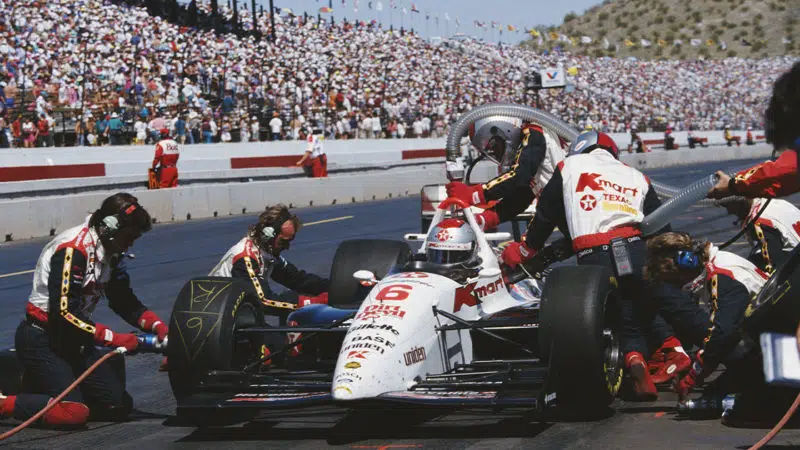The American would win Sebring three times in 1967, ’70 (in a Ferrari 512 S) and ’72 (in a Ferrari 312 PB), the first coming in the MkIV’s debut.
That first victory came in partnership with Bruce McLaren, and the car utilised the same 7-litre engine which the Mk II had, and with a NASCAR style steel tube roll cage, it was a sturdy yet rapid machine built for endurance.
“The Mk IV was so comfortable that it was more like a passenger car than a race car,” Dan Gurney is quoted on the Mk IV in Preston Lerner’s piece from last year.
Hawk III (1969) – Indy 500 winner
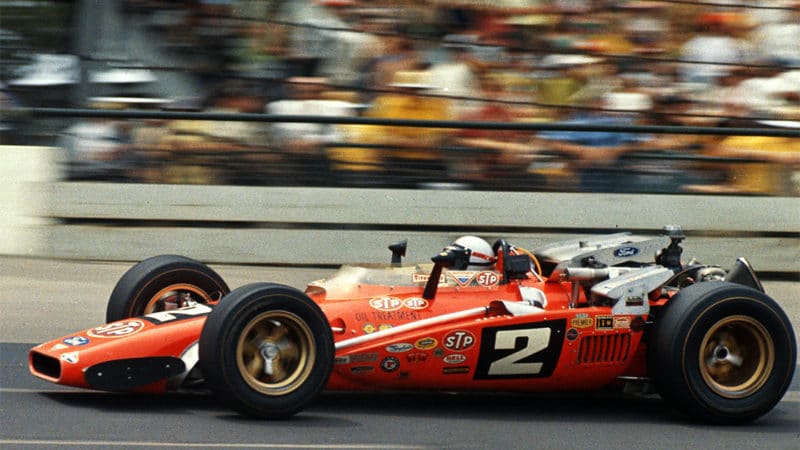
Indy 500 win came in ’69 with Hawk III
Getty Images
Four years after his first title Andretti had won it all in American single-seaters.
The Hawk III was ultimate optimisation of Brawner’s racing vision, and in Andretti it had the perfect driver.
The power-to-weight ratio in the light-chassis Hawk had always been to its benefit, and now with a 700bhp Ford engine propelling a 640kg chassis, Andretti had a rocket on his hand, using it to seal his only Indy 500 win, in 1969.
Having totalled his ground-breaking 4WD Lotus 64 in qualifying, Andretti had to fall back on his trusty Hawk III to first qualify second for the race, and then win it by leading 116 laps.
It was the fastest 500 to date at 3hr 11min 14.71sec, shaving five minutes off the previous time, and would be the only occasion – thus far – an Andretti driver would claim the US’s top prize.
Lotus 49B (F1 pole on debut) (1969)
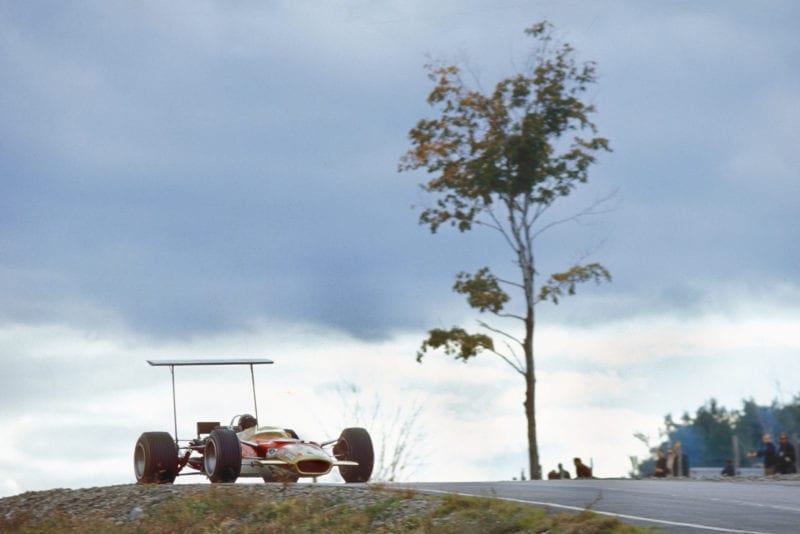
Mario Andretti makes his grand prix debut – at the second attempt – at Watkins Glen
Grand Prix Photo
Whilst getting on with being the undisputed heavyweight of the US racing scene, Andretti was also busy making waves in F1 at the wheel of the ground-breaking Lotus 49B.
Having taken pole on his debut at the ’65 500, Andretti had impressed eventual winner Jim Clark, who sang his praises to Lotus team boss Colin Chapman.
The Lotus principal had given Andretti a shot at Monza, before the F1 authorities banned him for having the temerity to fly back to the US in the middle of the Italian GP weekend to compete in the Hoosier 100.
It was at Watkins Glen that Andretti finally got a proper shot at F1, and like at the Brickyard four years earlier, he immediately put it on pole – beating grand prix regulars Jackie Stewart, Graham Hill and Chris Amon.
Andretti would shadow Stewart in second for the early part of the race before a clutch issue put him out, but the American, like with so many of his other cars, was immediately at one with the Lotus 49B.
Ferrari 312B (1971) – First F1 win
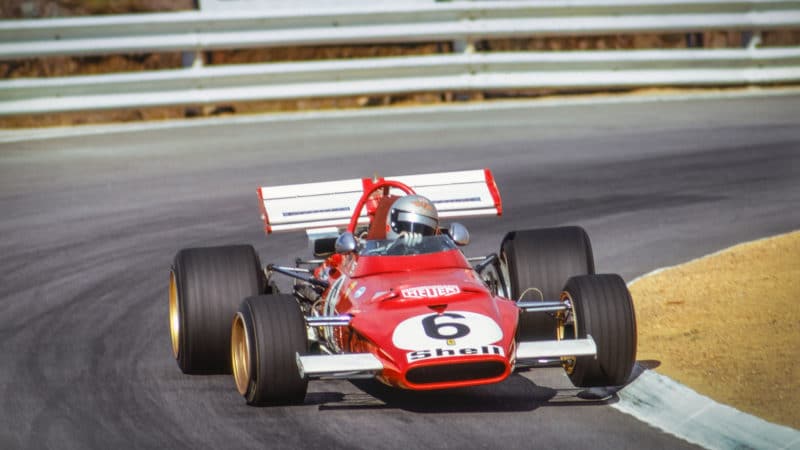
Andretti en route to winning his first F1 race, and with Ferrari to boot, at the South African Grand Prix in 1971
DPPI
Andretti may have claimed his first F1 pole for Lotus, but the first win came for his beloved Scuderia in South Africa.
The car had been introduced the previous season with a flat-12 engine, Jacky Ickx taking it to second in the drivers’ championship.
The following season though, it was Andretti who was first off the mark. Offered Scuderia drivers when his US commitments allowed, the American qualified fourth on his Ferrari debut.
Andretti initially fell back at the start, but gradually made his way through the field. Team-mate Clay Regazzoni led for the first 11 laps, before Denny Hulme commanded the race up until lap 75.
Andretti had been following the Kiwi for much of the race, before the McLaren driver’s rear suspension gave way, allowing the American to win in his just his second F1 start.
Parnelli VPJ-4 (1974–76) – Car that led Andretti to title

Andretti and the VPJ-4
Grand Prix Photo
The VJP-4 would be the physical representation of Andretti’s F1 frustration in the mid-’70s, but would eventually lead him on the path to becoming world champion.
